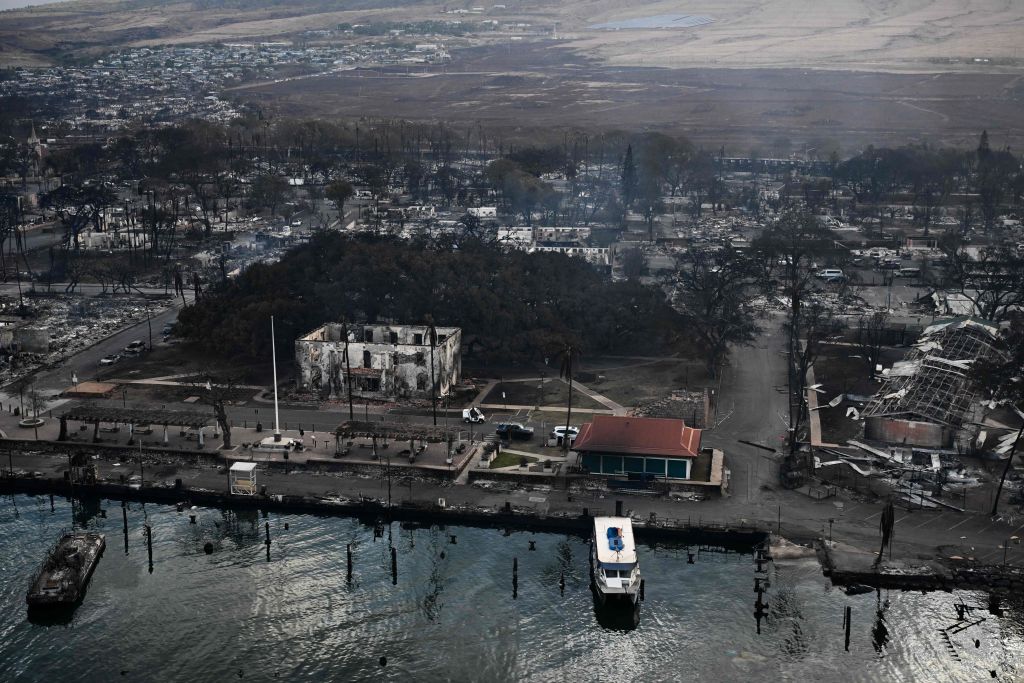Museums & Institutions
Deadly Maui Wildfires Have Destroyed Museums, Heritage Sites, and Scores of Cultural Artifacts
Preservationists are working to assess the losses while efforts to locate missing people surge on.

Preservationists are working to assess the losses while efforts to locate missing people surge on.

Artnet News

Numerous museums and cultural centers are among the sites irreparably damaged by the deadly wildfires that engulfed the Hawaiian island of Maui this month.
In Lahaina, a historic coastal town on the western edge of the island, thousands of structures were ravaged. Among them were many of the 14 museums managed by the Lahaina Restoration Foundation, such as the two-story Wo Hing Museum and Cookhouse, an early 20th-century social hall for Chinese immigrant laborers; the Lahaina courthouse, which housed the Lahaina Heritage Museum; and the nearly 200-year-old Baldwin Home, thought to be known as the oldest building of its kind on Maui.
“We’ve lost four museums,” Kimberly Flook, deputy executive director of the foundation, told Time last week. “If you’re into environmentalism, if you’re into surfing, if you’re into history, something was lost in all those ways.”
Scores of cultural artifacts held in these locations have also been lost. A 150-year-old banyan tree at the Wo Hing Museum was destroyed, as was an original native Hawaiian kingdom flag. Employees at the foundation believe that virtually any item made of paper, wood, or fabric—including numerous pieces of historic craftwork in the museums’ collections—did not survive.
The foundation has launched a fundraising campaign to aid in its recovery work. “Many homes, businesses and historic places have been damaged and destroyed,” the organization’s executive director, Theo Morrison, said in a statement. “We need to come together now to make sure our town recovers from this.”

An aerial view shows a historic Banyan Tree destroyed in Lahaina, Hawaii, on August 10, 2023. Photo: Patrick T. Fallon/AFP via Getty Images.
Still, the full picture of the wreckage is far from clear. Historic preservation experts have begun to survey the extent of the damage while efforts to locate the 1,000 to 1,100 people reported missing on the island surge on. To date, 115 people have been confirmed dead.
The fires that rocked Maui starting on August 8 were the worst in Hawaii’s history and the deadliest to hit the U.S. in over a century. Stoked by strong winds from Hurricane Dora, the flames spread rapidly over land primed by the conditions of deforestation and drought. On August 9, the state declared a state of emergency. The next day, President Joe Biden issued a federal disaster declaration.
Other sites affected by the fires include the 200-year-old Waiola Church and Cemetery, where members of the Hawaiian Royal Family are buried; the Lāhainā Jodo Mission, a Buddhist temple erected in 1912; and the Nā ʻAikāne Cultural Center, an event space for artists that once contained a soup kitchen for striking plantation workers.
“We’ve lost physical pieces of history,” Flook said, before offering a message of hope. “We have not lost our history, our culture. And we won’t.”
More Trending Stories:
Blue-Chip Artworks Seized From Top Portuguese Collector Will Be Featured in New Art Museum in Lisbon